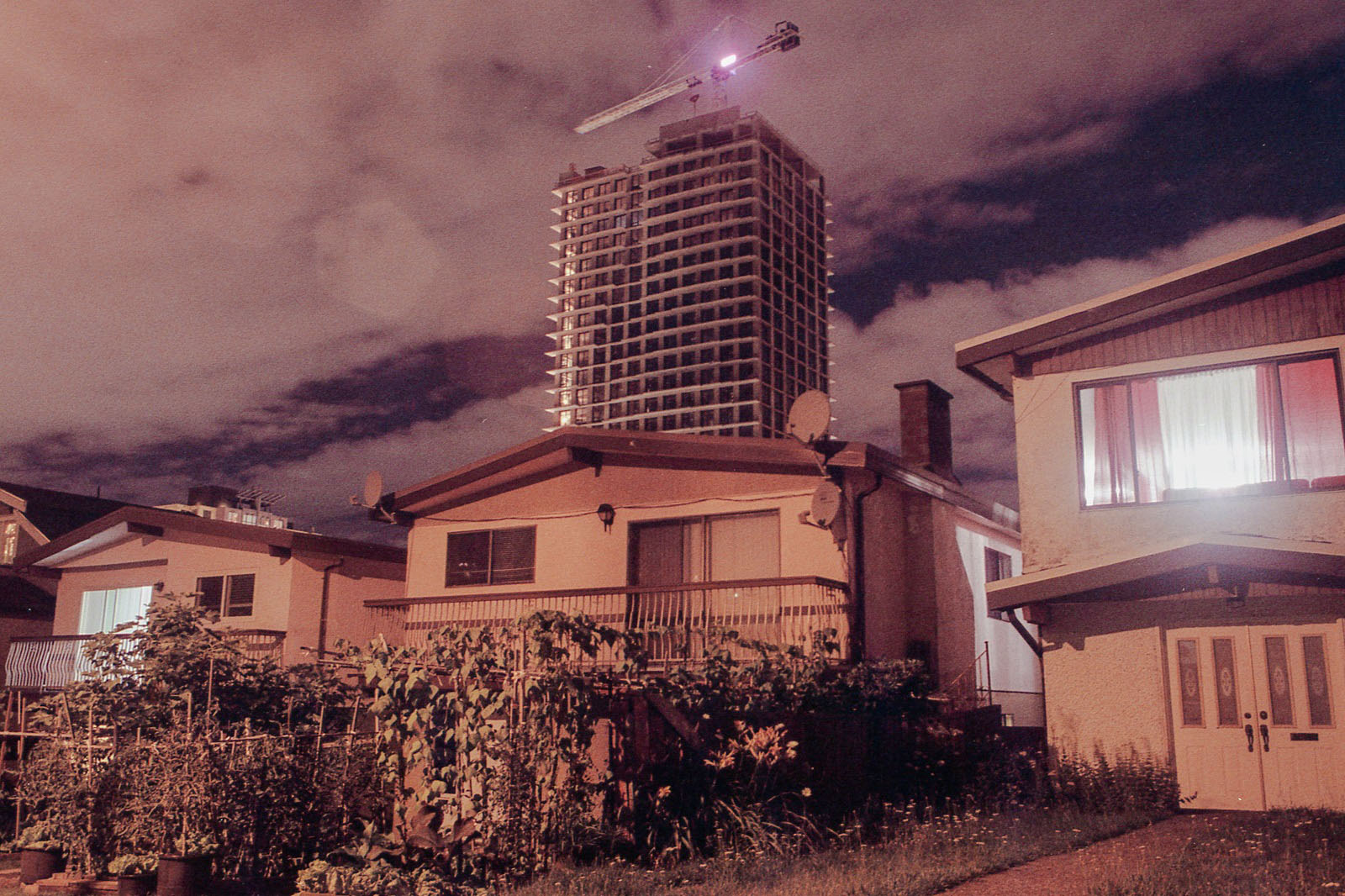At the beginning of the COVID-19 pandemic, many experts — including the Canada Mortgage and Housing Corp. — thought it would finally be the event that would cause Canadian home prices to drop, as lenders hesitated to finance homebuyers with shaky or disappearing incomes.
Instead, the opposite happened: the housing market heated up across the country, including in many rural markets. The Canadian composite benchmark price for a home was $570,000 in January 2020; today, it’s $736,000. At the same time home prices have soared, Canadian towns and cities have struggled to respond to rising numbers of homeless people throughout the pandemic.
Canada’s three major political parties have all spent time talking about the out-of-reach housing market on the campaign trail. Some concentrate more on helping low-income renters, while others focus on helping the private market build more units. And the Conservatives are tackling municipal zoning roadblocks that often scuttle high-density housing, with a proposed incentive program that would tie federal funding for transit to increased density near that transit.
But despite saying they want to make housing more affordable, all the major parties include policies that experts say will push prices even higher. The NDP, Conservatives and Liberals have all promised tax breaks, reduced barriers to lending or other measures to help wannabe homeowners gain a foothold in the market. Experts warn those measures will actually increase prices and reduce overall housing affordability.
“All three major parties are in various ways extending access to mortgage credit, to try to squeeze a few more people onto the property ladder,” said Alex Hemingway, an economist and policy analyst at the Canadian Centre for Policy Alternatives.
“Which will cause inflationary pressures on prices, and not get at the fundamental problems of the housing crisis.”
Tsur Somerville, an economics professor at UBC’s Sauder School of Business, echoed that warning.
“We were worried about rising house prices. And so, we did these things like [mortgage] stress tests and restrictions on mortgages, all things to reduce demand,” Somerville said, referring to federal policies put in place starting in 2010 in an attempt to avoid a repeat of the 2008 financial crisis and slow explosive growth in home prices.
“Now all three parties, and probably the Liberals more than anybody else, are like, ‘No, we want to give people the most money they can to buy housing.’”
Hemingway said all three party platforms are underwhelming when it comes to housing. He’s looking at three categories: what the parties are promising when it comes to creating more housing supply overall; how many public or non-market units they’re promising; and demand-side measures, like limits on foreign ownership or how much homeowners can borrow, that could help stabilize prices.
On the demand side, all the parties are focusing on foreign buyers. The NDP are proposing a 20 per cent foreign buyers tax, and the Liberals and Conservatives both say they’ll ban all foreign owners from buying residential property over the next two years.
But as much attention as foreign ownership gets, Hemingway says it’s not much of a game-changer when it comes to deflating home prices.
The Liberals have also promised a tax on home buyers who “flip” properties, a promise that’s been undermined by reports that their candidate for Vancouver-Granville, Taleeb Noormohamed, has bought and sold 21 properties within a year of buying them since 2005. In response, the NDP is promising to tax the capital gains of people who buy, renovate and resell properties.
NDP
The NDP are promising to build the highest number of affordable housing units — 500,000 over the next 10 years. Hemingway said that number still falls below modelling by the CCPA that has shown Metro Vancouver alone needs around 10,000 affordable housing units a year.
“They’ve got the strongest offer in terms of dedicated, affordable housing,” Hemingway said. “but that’s not at a level that addresses the need that we have.”
Somerville said it’s clear the NDP are focusing on renters, and especially low-income renters. While Hemingway says the 500,000 number falls short, Somerville questions whether it’s possible to build that many housing units in 10 years.
Increasing affordable housing construction that dramatically would be expensive and difficult, and would result in higher building costs overall, Somerville said.
The NDP are also promising a $5,000 benefit for renters. Somerville said the effect of that benefit would be uneven: to renters who are in a rent-controlled unit already, it would be more money in their pocket. But, he warned, the supplement could push already-high rents up, especially in cities where competition for older, cheaper rental units is intense. “If I have to look for a market unit when rents are going through the roof for the affordable units because there’s all this extra money sloshing around, it’s a problem.”
To homeowners, the NDP are offering to bring back 30-year terms on mortgages insured by the Canadian Mortgage and Housing Corporation, for “entry level homes for first time buyers,” and is promising to double the Home Buyers' Tax Credit to $1,500.
Liberals
When the Liberals first swept to power in 2015, it was with a promise to restore the role of the federal government in housing after decades of leaving housing to the provinces and municipalities. The Trudeau administration created the National Housing Strategy and promised $40 billion in housing funding over 10 years (housing advocates cheered the federal government’s return, but many panned the relatively paltry amount of funding).
The Liberals also changed the purpose of the CMHC from an agency that concentrated on insuring mortgages and tracking the health of the housing market to a Crown corporation that now states its purpose is “to make housing affordable to everyone in Canada.”
But this time around, when Somerville looks at what the Liberals are promising, it’s a confusing grab bag of policies. There are commitments to end practices like blind bidding — a real estate practice that had Ontario home buyers irate during the latest price spike — and commitments to review how Real Estate Investment Trusts and other large rental property holders are taxed. REITs (companies that own, operate or finance other income-generating real estate) and other “financial landlords” — companies that acquire and operate properties as investment products — now control over 300,000 rental units in Canada.
On new housing funding, the Liberals are promising $2.7 billion to the National Co-Investment Housing Fund — a CMHC program that funds non-profit housing development with a combination of grants and low-interest loans — over the next four years.
“That might sound like a big number,” Hemingway said. “But once you look at that on a per-year basis and look at what B.C.’s portion of that would be, we’re talking about $87 million dollars per year.”
And when it comes to doling out goodies to wannabe homeowners, the Liberals are offering a long list: creating a $40,000 tax-free savings program to help Canadians buy a home; doubling the first-time buyers tax credit from $5,000 to $10,000; “forcing” the CMHC to cut mortgage insurance rates by 25 per cent; and increasing the CMHC-insured mortgage cutoff from a home price of $1 million to homes up to $1.25 million.
Many of these Liberal promises are funded by Canadian taxpayers and will benefit wealthier people the most, Somerville said.
Hemingway argued the “hyper focus” on homeowners leaves renters out in the cold. “It’s increasing inequality,” he said.
This focus also makes it harder to build rental housing in Canada, Hemingway added, because increasing subsidies to homeowners makes it more lucrative to build detached homes and condos than rental buildings.
Conservatives
When it comes to offering government money to build housing for non-market rental housing, the Conservatives offer the least of any of the three major parties, Hemingway said. Instead, the party is promising to create more housing supply by incentivizing private developers to build.
“The Conservatives see the situation as, ‘Government is a bit in the way — and we need to enable the market to do a better job of providing,’” Somerville said. “Whether or not that is through a certain set of tax incentives, or sticks to local government to stop restricting supply.”
Municipalities are often reluctant to change land use rules to allow higher density housing, and the Conservatives are proposing to tie federal funding for transit expansions to higher density housing near that transit. That’s similar to policy put forward by Democrats like Elizabeth Warren, Bernie Sanders and Alexandria Ocasio-Cortez in the United States, and Hemingway and Somerville both say it could help unlock new housing supply.
“It’s a good idea,” Hemingway said.
“The Liberals haven’t mentioned zoning. They talk about a [$4 billion] housing accelerator fund to try and speed up supply at the municipal level, but the mechanics of it are very unclear. And on the NDP side, at least in some tweets, there’s a sort of hostility to adding new market rental supply.”
The Conservatives are also trying to incentivize investment in rental housing by allowing investors to defer the capital gains tax when they sell a rental property and reinvest in rental housing.
When it comes to homelessness, the Conservatives don’t talk about permanent housing, but reiterate their promise to invest $325 million in addiction treatment beds.
Hemingway said a lack of commitment to building more non-market, affordable housing is a big hole in the Tory platform.
“They have no real offer on the public affordable housing side, and there’s just no way out of this crisis without dramatically expanding that type of housing,” Hemingway said.
On helping homeowners, the Conservatives are promising to relax stress tests for mortgages and increase the limit on mortgage insurance so higher-priced properties are covered, “allowing those in high-priced real estate markets with less than a 20 per cent downpayment an opportunity at homeownership,” according to the Conservative platform.
The Conservatives are also promising to never tax individual homeowners’ capital gains — the profit made when a principal residence is sold, and which is currently totally untaxed.
Politically, it may be a hard sell to tax homeowners’ capital gains. But, Hemingway said, it’s one more example — and a very big one — of how governments have given huge subsidies to homeowners for decades.
“The non-taxation of capital gains on principal residences costs the federal treasury about $8 billion dollars per year,” Hemingway said. “That does a couple of things — it helps inflate home prices, and it makes it more difficult to get rental housing built.”
Given the scale of Canada’s housing crisis, Hemingway would like to see all the parties think bigger.
“If we’re in a crisis, every level of government needs to use all the tools it has,” he said. ![]()
Read more: Housing, Election 2021
















Tyee Commenting Guidelines
Comments that violate guidelines risk being deleted, and violations may result in a temporary or permanent user ban. Maintain the spirit of good conversation to stay in the discussion.
*Please note The Tyee is not a forum for spreading misinformation about COVID-19, denying its existence or minimizing its risk to public health.
Do:
Do not: